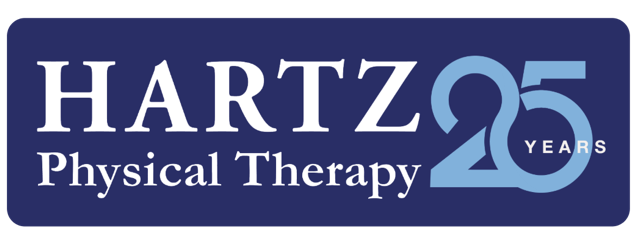Written by Brian Hartz, DPT, MPT, OCS, CSCS
Article
More About Physical Therapy
 This year, we were awarded LNP’s Reader’s Choice Award for Favorite Rehabilitation Clinic for the 24th year in-a-row and announced as WebPT’s 2024 Practice of the Year. These two milestones gave me time to reflect on our remarkable staff and how they have helped us create a locally-owned clinic where our tagline ‘Experience the Difference’ is a reality for our patients every day.
This year, we were awarded LNP’s Reader’s Choice Award for Favorite Rehabilitation Clinic for the 24th year in-a-row and announced as WebPT’s 2024 Practice of the Year. These two milestones gave me time to reflect on our remarkable staff and how they have helped us create a locally-owned clinic where our tagline ‘Experience the Difference’ is a reality for our patients every day.
So how do we do it? With the recent uptick in healthcare burnout rates, we set clear and realistic capacity expectations for our most important resource: our staff members. Clinics that expect their clinicians to be juggling three or more patients at a time are doing a disservice to our profession.
At HARTZ Physical Therapy our patients benefit from the Team Treatment Model we use. This successful model pairs a PT to work with a PTA as a team. To be clear, we do not have our PTAs run an independent schedule. Rather each PT/PTA team has one schedule, and they work cohesively each day to treat their combined caseload. It may surprise you that not all physical therapy clinics employ PTAs, however, our team embraces the opportunity to collaborate with another practitioner and feels it is beneficial not only for the clinicians but even more so for their patients.
The positive benefits of the our treatment model are undeniable:
Continuity of Care:
Two team members routinely treat each patient throughout their plan of care. This allows patients to develop a comfort level with both providers. We have found that this improves attendance when one of those providers is out of the office on vacation or an emergency arises. Rather than working with an unfamiliar provider, patients can rely on the second team member to ensure continuity of care.
Increased Flexibility:
The team treatment model provides significantly more flexibility throughout the day versus most clinic’s independent treatment model. For example, if a patient needs additional attention or has a long list of questions, the second provider (ie: PTA) can facilitate continued care so the team stays on track throughout the day. This prevents a patient from feeling rushed and ensures the next patient’s appointment starts on time. The ability to co-treat within the same visit also maximizes the PT’s time allowing for a complete & thorough evaluation.
Increased Efficiency:
Sending timely progress notes, ensuring consistent follow-up with current and past patients, and advancing Home Exercise Programs (HEPs) are some of the tasks that are easier to maintain in a team treatment model. The result for patients is better communication with the team to understand goals, devise customized treatment plans, and track progress. All of this leads to better outcomes for the patient along with the possibility of fewer visits.
Teamwork:
This model fosters an environment of communication, collaboration, and teamwork between the PT, PTA, the patient and their physician thereby improving our employee morale, company culture and patient satisfaction.
Quicker Scheduling Turnaround:
We have clinicians who have developed a great following over the years and some patients will only schedule with their preferred provider. Pairing that PT with a PTA increases schedule capacity, which will decrease wait times when scheduling new evaluations. It is proven that quicker access to care improves outcomes and our ability to schedule appointments within 24 – 48 hours ensures those results.
Professional Growth for PTAs:
Our PTAs are vital to our company and deliver great patient care. Pairing them with a PT fosters their professional growth as they have consistent mentorship and collaboration on a daily basis.
Increased Creativity:
The old saying rings true, two heads are better than one and this is no exception in physical therapy. Creative solutions to difficult cases can be a lifesaver. Team treatment models facilitate greater collaboration and brainstorming while working together toward a common goal…helping our patients.
Documentation Help:
We have found that our providers can carve out time to complete documentation more easily when they are sharing a caseload with another teammate. This reduces the need to complete paperwork after hours, which is always a good thing and it ensures accurate record keeping which ensures proper care.
Our clinic has been able to maintain a cancellation rate of just under 10%. Ensuring we are scheduling our patients efficiently is an ongoing initiative in our clinics as we continue to identify what works best not only for patient care but also for our clinicians. It may sound counterintuitive, but our priority is taking care of our staff members. In turn, they feel cared for and they are providing that same level of care and support to their patients making us all one fully engaged, productive team!
